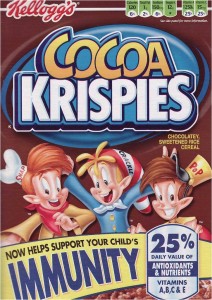Uh oh. Industry forces FDA to drop oyster safety plan
On November 13, the FDA announced indefinite postponement of rules requiring raw oysters from the Gulf of Mexico to undergo postharvest processing to destroy their content of Vibrio vulnificus, a particularly nasty “flesh-eating” bacterium. According to accounts in the New York Times and in industry newsletters, the FDA caved under pressure from the oyster industry and members of Congress representing oyster-harvesting regions in the Gulf.
The FDA has been trying for years to get the oyster industry to clean up its act and use post-harvest technologies to sterilize oysters in order to prevent the 15 or so deaths they cause every year. The technologies include quick freezing, frozen storage, high hydrostatic pressure, mild heat, and low dose gamma irradiation. When used, the methods reduce bacteria to undectable levels and deaths from Vibrio vulnificus infections to zero. As the FDA puts it, “seldom is the evidence on a food safety problem and solution so unambiguous.”
The FDA took action on October 16. It wrote a letter to the industry announcing the new rules. It would expect oyster producers to use the techniques, especially on oysters harvested in summer months when bacteria levels are higher. It also issued a background paper on why the techniques are needed, a fact sheet on oyster hazards, and a Q and A on the new policy.
On October 17, FDA official Michael Taylor gave a speech to the oyster industry outlining the policy.
Oops. The oyster industry did not take well to the idea and went into organized action.
Now, the proposed rules are history. As the FDA explains:
Since making its initial announcement, the FDA has heard from Gulf Coast oyster harvesters, state officials, and elected representatives from across the region about the feasibility of implementing post-harvest processing or other equivalent controls by the summer of 2011. These are legitimate concerns.
It is clear to the FDA from our discussions to date that there is a need to further examine both the process and timing for large and small oyster harvesters to gain access to processing facilities or equivalent controls in order to address this important public health goal. Therefore, before proceeding, we will conduct an independent study to assess how post-harvest processing or other equivalent controls can be feasibly implemented in the Gulf Coast in the fastest, safest and most economical way.
My interpretation: 15 or more preventable deaths a year, every year, from oyster Vibrio must not be enough to elicit industry responsibility or FDA action. That the FDA was forced to back down so quickly is not reassuring about this administration’s commitment to food safety. Make no mistake. This is a major setback to developing a strong food safety system.
One of the ironies here is that the FDA’s approach to oyster safety mirrored the approach taken by the very same Michael Taylor when he worked for the USDA in the mid-1990s. Then, the administration backed him up on requiring science-based food safety procedures for meat and poulty producers. This time, it looks like the administration pulled the rug out from under him and forced the FDA to back down.
Note: Thanks to Mike Taylor, safety rules are in place for meat and poultry. Unfortunately, the current USDA isn’t enforcing them. I will have more to say on that point in tomorrow’s post.
Another note: Center for Science in the Public Interest, which has been pushing for oyster safety for years, has organized a protest campaign. Sign up here.


